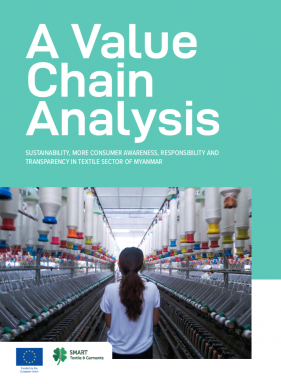
The textile and garment industries are quintessential engines of industrial growth for many developing countries, providing an entry point for economic growth, employment generation, and poverty alleviation. The attraction of these industries to developing countries such as Myanmar includes low entry costs and availability of low-wage workers, often women and migrant workers. Foreign direct investment into these industries generates job opportunities for young workers, particularly from rural and migrant households. On the other hand, these jobs often lack decent work conditions while the industries have poor adherence to social and environmental standards. Therefore, this study investigates the value chain of textile industries in Myanmar to identify the gaps in working conditions, sustainability of production processes, and social challenges of producers and workers at the bottom of the chain. This study focuses more on the domestic value chain of the industries to understand the state of various stages of the textile value chain in Myanmar (see Figure 1.1) while exploring changes amid the ongoing crisis in Myanmar. This study used a combination of a quantitative survey of producers and qualitative interviews and discussions with key stakeholders in each segment of the chain from cotton production to ginning, spinning, weaving/knitting and dyeing sub-sectors.





